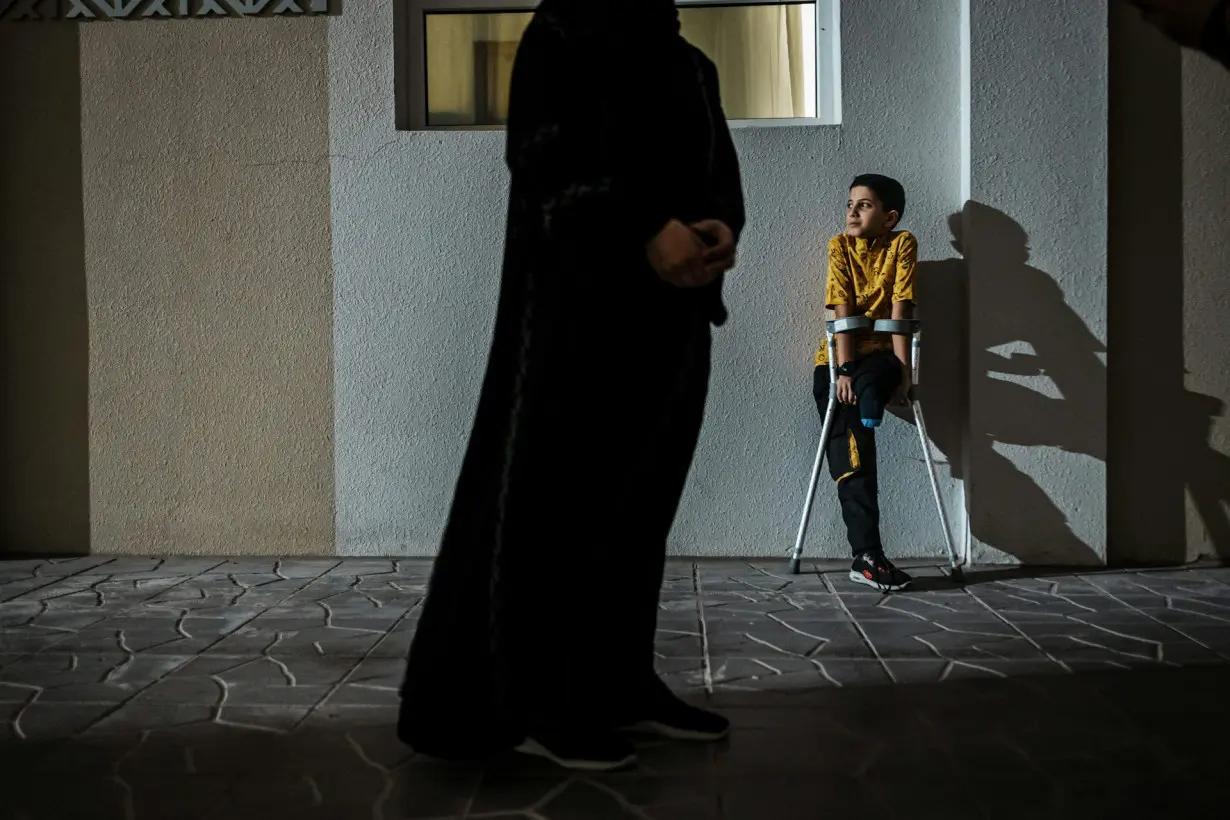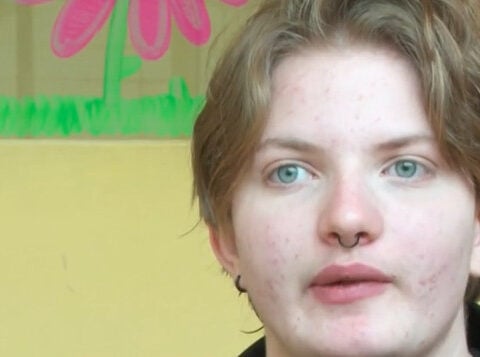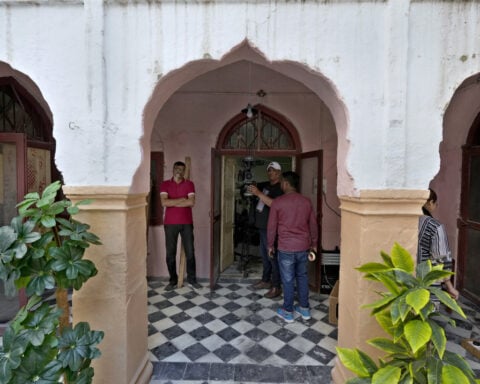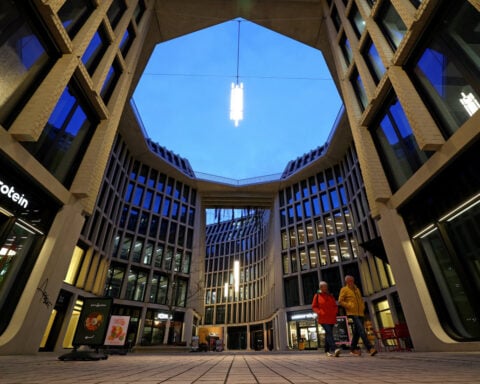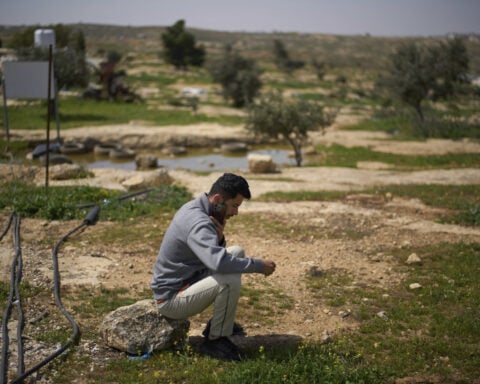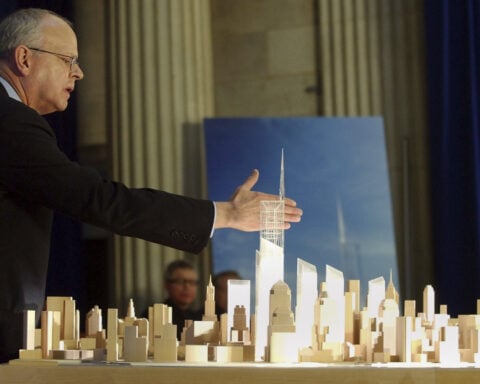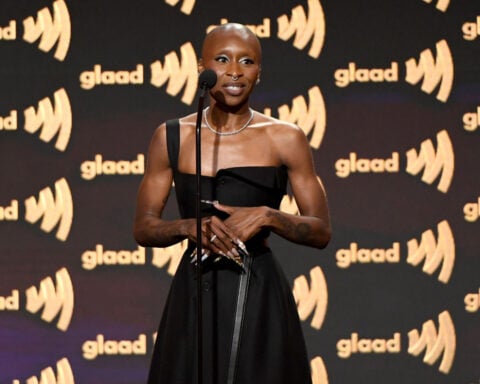Words fail as 2,000-pound bombs shred lives and limbs.
The sheer number of children killed in Israeli attacks on Gaza is devastating – at least 13,000 children in the first six months of the war. But somehow I am even more dumbfounded by the headlines, piled one after another, about children who have managed to survive a bombing but at the cost of one of their limbs:
In November: “‘I want my legs back’: the child amputees of Gaza’s war.”
A few days after Christmas: “… Children in Gaza Face Amputations Without Anesthesia …”
In January: “More than 10 children losing legs in Gaza every day …”
By February, the grim had turned grotesque: “‘Dining table amputation’ …”
Though the current scale of pediatric amputations is unprecedented, the loss of limbs and the dividing of territories have been all-too-common features of the Palestinian experience since the Nakba, or “catastrophe,” of 1948, when 750,000 Palestinians were forced off their land or fled from it.
For this reason, amputation has long played an important role in Palestinian literature. In the narratives of the Palestinian writers whom I’ve studied and translated, lost limbs represent both physical and metaphorical loss.
Amputation as indignity
During the Nakba, thousands of displaced Palestinians fled to countries such as Lebanon, Syria and Iraq, where conditions for refugees were dire.

Ghassan Kanafani’s 1963 novel ‘Men in the Sun’ is his most famous work.
Ghassan Kanafani’s 1963 novel “Men in the Sun” is the story of three Palestinians who try to migrate clandestinely from Iraq to Kuwait in search of a better life.
At the novel’s climax, the refugees suffocate while hiding in a lorry tank at the border – the consequence, Kanafani suggests, of their timidity in the face of oppression. However, two examples of amputation in the story reveal the author’s more complex thoughts on internalized victimhood.
The first amputee readers meet in the novel is Shafiqa, the stepmother of one of the refugees, Marwan.
Shafiqa lost her leg during the bombardment of Jaffa by Zionist paramilitary groups in the 1948 Arab-Israeli war. Her husband – Marwan’s father – married her purely to improve his economic situation: He’s able to access the money she receives from charity. Marwan despises Shafiqa, seeing her as a cause of his family’s splintering and calling her “that deformed woman.”
At one point, he looks at his stepmother with a kind of disgusted curiosity:
“She was sitting on a carpet of goatskin. The stick was lying beside her, and he thought: ‘I wonder where her thigh ends?’”
Kanafani’s portrayal of amputation is so pitiless that some readers might wonder whether he strays into victim-blaming. But Shafiqa’s character actually represents the author’s worst fears about victims becoming objects of exploitation, and “Men in the Sun” is ultimately a cautionary tale that calls on Palestinians to fight against victimhood at all costs.
Yet Kanafani also wants readers to understand that even those who resist may be humiliated and debased. That’s what happens to the character of Abul Khaizuran, the smuggler whom Marwan and his companions hire to help them cross the border.
Khaizuran is the novel’s antihero. He is ultimately responsible for the death of the three refugees, but he refuses to accept any blame.
In his glory days, Khaizuran had been a resistance fighter, but in the 1948 war, he sustained an injury that led to a different kind of amputation: surgical castration.
“For ten long years he had been trying to accept the situation. But what situation? To confess quite simply that he had lost his manhood for the sake of the homeland? And what good had it done? He had lost his manhood and his homeland, and damn it all to hell!”
Fighting for one’s dignity is not in the slightest guaranteed to preserve it; at the same time, victimhood and nihilism can go hand in hand.
In a flashback, a doctor tries to reason with an inconsolable Khaizuran following his operation. “At least it’s better than dying,” the doctor says.
“No,” he responds. “It’s better to be dead.”
Palestinians undergoing amputation today are confronted with a similar “impossible choice” between life and limb. In normal circumstances, many of the amputations taking place in Gaza could be avoided. But because of unsanitary conditions and limited access to hospital care, patients risk infection, forcing doctors to resort to amputation as a lifesaving measure.
Modern medicine generally allows child amputees to have a healthy future with regular care. But this level of treatment is impossible in Gaza. With hospitals ravaged by Israeli bombings and medical supplies blocked from arriving, every step in the process of amputation – from the operation itself, to postoperative treatment, to disability management – is marred by pain and indignity.
In 1972, Israeli operatives assassinated Kanafani, who also served as spokesman for the Popular Front for the Liberation of Palestine, a leftist Palestinian faction. Moments after his wife, Anni, kissed him goodbye, an explosion rocked their house in Beirut.
Anni rushed downstairs and found the wreckage of their car and, next to it, Kanafani’s left leg.
Amputation as disunity
Yousri Alghoul, a 43-year-old Palestinian author, grew up in a refugee camp in Gaza. He is currently enduring the war with his family in the northern part of the strip.
A recurring theme in Alghoul’s work is the disruption of burial rituals and the mourning process. He also describes the visceral horror of bodies with limbs blown off. For Alghoul, amputation serves as a symbol of the fragmentation of Palestinian society.
In Alghoul’s 2021 novel “Gallows of Darkness,” a character named Hudhayfah undergoes amputation.
Hudhayfah is a high-profile Hamas member released in the 2011 prisoner exchange deal, in which Israel freed more than 1,000 Palestinian prisoners in exchange for Israeli soldier Gilad Shalit.
Upon returning to Gaza, Hudhayfah makes it his mission to end infighting between Palestinian factions and bring them together to forge a unified front against the Israeli occupation.
During the novel’s depiction of Israel’s 2012 military campaign in Gaza, Hudhayfah coordinates war efforts with fighters representing other Palestinian groups, including the PFLP and Hamas’ rivals, the Fatah party. One day, Hamas militants show up at his door to take him away, supposedly to save him from an imminent Israeli assassination attempt. They say they want to bring him down into the tunnels to safety. But as he descends in a makeshift elevator, it malfunctions and falls down its shaft.
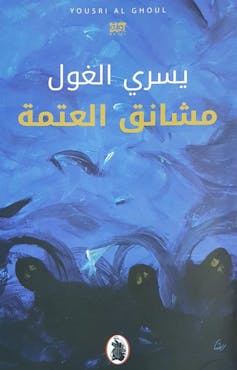
Yousri Alghoul’s 2021 novel ‘Gallows of Darkness.’
When Hudhayfah awakens, he discovers that his leg has been amputated. There is a cosmic irony in the separation of his limb from his body, given his efforts to unite Palestinian factions. And he gets the strange sense that the Hamas members who are with him underground are pleased that he’s in this condition.
He wonders: Was this a deliberate attempt on his life by his fellow fighters?
While the reader is left to assume that the elevator malfunction was the result of foul play from Hamas members, the possibility lingers that the incident was caused by an Israeli attack. The ambiguous circumstances of Hudhayfah’s death can be read as a reminder that Israel helped create the conditions for violent Palestinian infighting. Indeed, for years, Israel used the Hamas movement as a cudgel against other Palestinian political groups as a part of a divide-and-rule strategy.
Hudhayfah is given the option of being smuggled out of Gaza to be treated in a European hospital. He declines and instead seeks unity – not political unity this time, but the physical unity of his own body.
His leg has already been buried in a cemetery in Gaza, in accordance with Islamic custom. Hudhayfah jokes that if he were to die abroad, his body and leg would be buried separately, and on the Day of Resurrection, he would be forced to hop around on one leg, looking for his other one.
He dies a few days later.
Amputated stories
After the creation of Israel in 1948, Emile Habiby, the late Palestinian writer and politician, resolutely “remain[ed] in Haifa,” as his tombstone in that city reads.
Habiby’s collection of short stories, “Sextet of the Six-Day War,” describes the pain felt by Palestinian citizens of Israel for the 19 years during which they were cut off from their loved ones who had been expelled from Israeli territory.
The motif of being severed runs throughout “Sextet.” But the most striking “cutoff” of the entire collection comes in the third story. It ends prematurely when the narrator jumps in to recall a bedtime story his grandmother used to tell. Due to her age, she often became confused and would start the story in the middle.
Habiby writes:
“Not once did we stay awake until the end of the story, and not once did she make it to the end without falling asleep. And when we grew up we’d remember my grandma and her story, which we called ‘al-batrā’ [the incomplete – literally, the amputated] and we’d drown in laughter.”
For all its brilliance, the grandmother’s story has no beginning or end. In the same fashion, in place of an ending to his story, Habiby simply inserts the bedtime story, adding: “Let this story remain batrāʾ, until we write its ending together.”
Readers know from Habiby’s earlier pieces in “Sextet” that the real “amputee” is Palestine – its map and lands physically cut into pieces.
In much of the media’s coverage of the ongoing conflict, I’ll often see the beginnings and ends of Palestine’s stories amputated.
For example, Israeli forces responded to the overwhelmingly peaceful demonstrations of the 2018-19 Great March of Return by killing scores of Gazan protesters and maiming others, leading to 156 amputations. These and many other crucial details of the Palestinian narrative have often been severed from stories told in Western mainstream media outlets.
And yet, one of Habiby’s best known authorial traits is his ability to trudge absurdly through catastrophe to find tiny nuggets of positivity, an attitude dubbed “pessoptimism.”
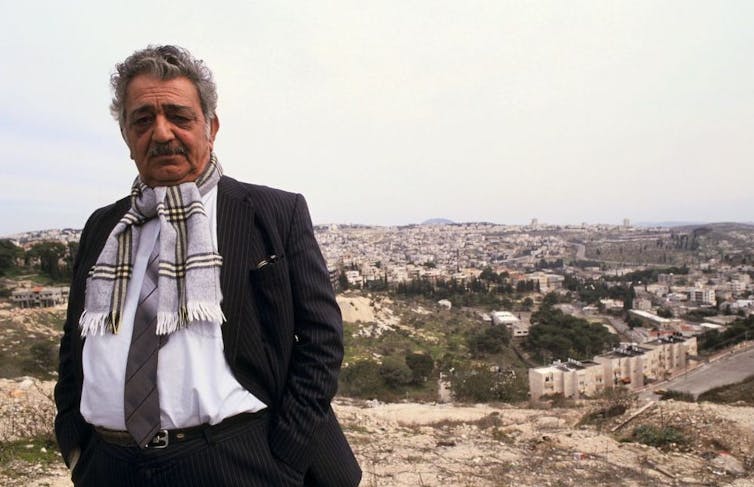
Emile Habiby in Israel in February 1991.
What would it look like to “write” the “ending” of this war in Gaza? If Gaza has been amputated from Palestine and the rest of the world, how can it be grafted back on again?
Efforts toward this kind of figurative prosthesis have been underway since the start of the war. Such efforts are exemplified by Palestinian journalists refusing to let stories of life under the bombs go untold, and by global solidarity initiatives at grassroots and multilateral levels.
Despite these attempts at prosthesis, many of Gaza’s wounds may never heal. Even literal prosthetic treatment on a massive scale wouldn’t give Gaza’s children back their legs. No words can change that.

I have translated Yousri al-Ghoul's and Emile Habiby's work.
Source: The Conversation

 Trump has begun another trade war. Here's a timeline of how we got here
Trump has begun another trade war. Here's a timeline of how we got here
 Canada's leader laments lost friendship with US in town that sheltered stranded Americans after 9/11
Canada's leader laments lost friendship with US in town that sheltered stranded Americans after 9/11
 Chinese EV giant BYD's fourth-quarter profit leaps 73%
Chinese EV giant BYD's fourth-quarter profit leaps 73%
 You're an American in another land? Prepare to talk about the why and how of Trump 2.0
You're an American in another land? Prepare to talk about the why and how of Trump 2.0
 Chalk talk: Star power, top teams and No. 5 seeds headline the women's March Madness Sweet 16
Chalk talk: Star power, top teams and No. 5 seeds headline the women's March Madness Sweet 16
 Purdue returns to Sweet 16 with 76-62 win over McNeese in March Madness
Purdue returns to Sweet 16 with 76-62 win over McNeese in March Madness
